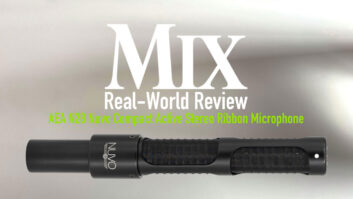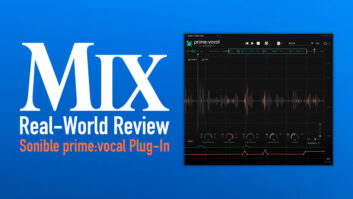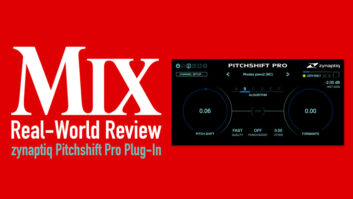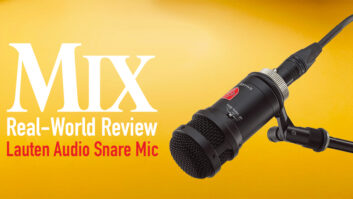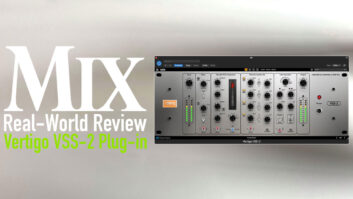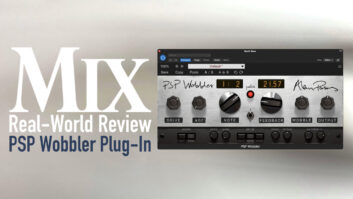When Jonathan Deans started sketching the sound design for Seussical, the new Broadway musical based on the works of children’s artist Dr. Seuss, his priority was to deliver maximum sound quality without taking up too much floor space in the theater.
He got his wish thanks largely to the CueConsole by Level Control Systems Audio of Sierra Madre, Calif. A new modular controller for LCS’ Matrix3 digital audio platform, the CueConsole is designed to deliver high-input capacity, high-audio quality, extensive routing flexibility and saves space.
“We would have needed 28 seats on the orchestra floor with an analog or digitally controlled analog console,” says Deans, “but with the new LCS system, we only needed seven. We saved 21 seats per show, which comes to possible additional revenue of more than $12,000 per week. That easily pays for the entire sound system.”
The CueConsole, which sits in the FOH position, controls eight LX-300 modules that reside in a “rack room” backstage. Each LX-300 is equipped with three 8-channel card slots that can be configured as inputs or outputs. For Seussical, Deans chose to set up the LX-300s with 16 inputs and eight outputs, for a total of 128 inputs and 64 outputs.
Because the CueConsole is not an audio board, per se, but rather a fully featured remote controller, the audio signals do not need to be routed to the FOH position. Instead, audio flows from a band of 64 Aphex 1788 preamps (which themselves are remote controlled) set up near the stage to the LX-300 units, which are also nearby. From there, a Cat 5 cable delivers the digital audio data to and from the CueConsole.
From Deans’ perspective, the Aphex units provide the dual benefit of remote access and quick conversion of mic signals to line-level. “As soon as a mic signal comes out of the orchestra, it only has to go a short distance before it gets converted to line-level, and then there’s only a short distance to the LX-300 input, which is right next to it,” he explains. “The quality difference is just incredible between sending all those inputs up a mult line for 300 feet and sending them a short distance at line-level.” The remote interface of the Aphex 1788 is simple, he adds, and “visible from all angles.”
Besides the LX-300 modules, the backstage rack room houses a monitor console and an auxiliary Crest VX board that can be used in case the LCS goes down (which it hasn’t). The entire setup is designed to resemble, in form and function, a project studio. Seussical associate sound designer Peter Hylenski says, “It’s a carpeted area with a monitor console and Genelec near-field monitors. We tried to give the whole thing a studio feel.”
The monitor console provides a static, 16-channel mix to a headphone cue system custom-designed and built by Moonachie, N.J.-based theater rental company Masque Sound, which also supplied most of the audio gear for the show. For the musicians, the ability to create their own mixes has relieved the headaches normally associated with monitor and headphone sound.
Because of the amount of experimentation that went into implementing the LCS system, Deans relied more on the tried-and-true in some other areas of the production. For example, Deans used all Meyer Sound loudspeakers, including CQ-1s, UPA-1Ps, PSW-4 subwoofers, MM-4s for delays and HM-1s for surrounds.
That’s not to say that Deans and his team didn’t push the envelope a bit. For instance, during a pre-Broadway run of the show in Boston, the crew resorted to wireless versions of the Meyer HM-1s, because the venue’s historical protection status prevented cable runs to the surround speakers.
As far as mics are concerned, Deans tried out the Countryman B6 mini-mic, which was new to him. “It’s so tiny, it’s almost the size of the cable hanging off it,” he says. “We were able to put them on some of the performers in places where you can’t normally put a mic.”
Because much of the sound for Seussical comes off the orchestra pit virtually mix-ready, a minimum of audio processing is used. For reverbs, Deans relies on the TC Electronic 6000 multichannel processor, and for special effects he employs an Eventide H3000.
Based around synthesizer pads coming off a Kurzweil 2500, Yamaha B3 modules and V-Drums, the pit orchestra also includes electric guitars playing through Roland GT-3 units and an electric bass running through a Line 6 Bass Pod, and such “live” elements as cymbals, hi-hats, a field snare drum and percussion. Strings, brass and reed sections are located in a remote pit.
Besides Deans and Hylenski, the Seussical audio team consists of head sound engineer Carin Ford, who mixes the house sound; production sound specialist Garth Helm; and assistant sound engineer Tim Pritchard, who oversees wireless mics and monitor mixes.
Seussical, which opened at the Richard Rodgers Theater on December 6, was directed by Frank Galati and choreographed by Kathleen Marshall, with lyrics by Lynn Aherns and music by Stephen Flaherty.
Paul Verna is Mix’s New York editor.

